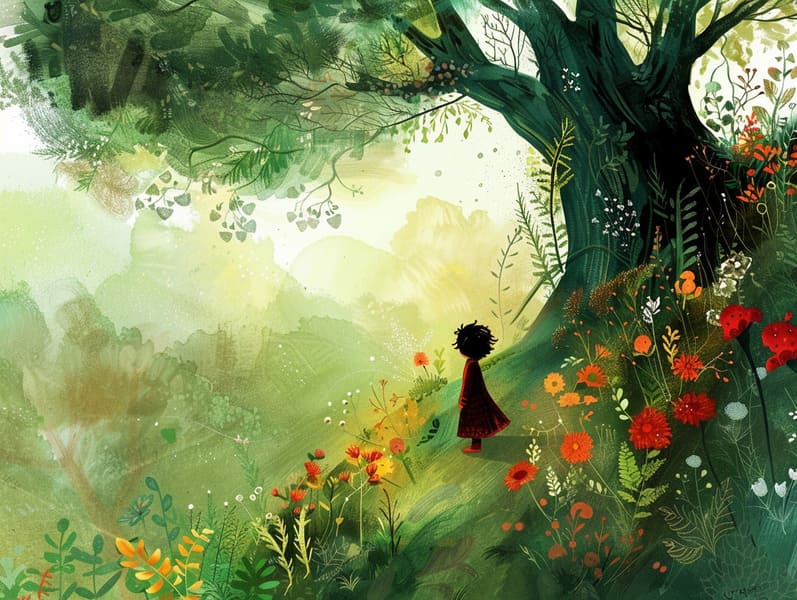The Start of Famous Fairy Tales with Their Everlasting Charm.

Best fairy tales have ancient roots. These narratives have been told from one generation to the next well before they were ever published. They developed from a variety of traditions, including American traditions. They were initially conveyed among grown-ups, often carrying themes and messages reflective of the societal norms and beliefs of the time.
Jacob and Wilhelm Grimm, Jacob and Wilhelm Grimm, were among the first to compile and publish many of these beloved narratives. Their volume, "Grimm's Story Collection," included classics like "Ashenputtel," "The Bread Crumb Trail," and "Schneewittchen," which have since become essentials in the world of classic fairy tales. Similarly, H. C. Andersen's whimsical narratives, such as "The Sea Maid," and "The Little Duckling," have enchanted hearts worldwide, cementing their place in the pantheon of beloved fairy tales.
Despite their age, fairy tales remain as applicable as ever, especially as children's night stories. These enchanting tales are now available in various formats, including artistically illustrated books, charming animations, and online storybooks.
Their unwavering allure can be traced to several captivating elements:
Ethical Lessons: Traditional fairy tales often illustrate important moral lessons. Fairy tales like "The Boy Who Cried Wolf" teach the virtue of being truthful, while "The Story of the Tortoise and the Hare" point out the virtues of steadfastness and humility. These stories offer young readers clear distinctions between virtue and vice, guiding their moral compass in a soft yet meaningful way.
Warmth and Understanding: Ancient fairy tales frequently showcase personalities facing difficulties and adversities, stimulating listeners to empathize with their struggles and cheer for their triumphs. For instance, "Beauty's Beast" reveals the benefit of looking past the exterior to perceive the inner core of a being, enhancing empathy and knowledge.
Cultural Appreciation: Many traditional fairy tales are saturated in the cultural contexts from which they emerged. Immersing in these fairy tales can provide captivating looks into different cultures, nurturing a sense of global insight and discernment.
Inventiveness and Fantasy: The magical elements in traditional fairy tales—magical beings—invigorate children’s imaginative ideas. These fairy tales transport readers to supernatural realms, provoking fantasy dreams and a sense of wonder that stays a lifetime.
Ancient fairy tales are not only magical but also enlightening. They work as delightful tools in cultivating various cognitive and emotional skills in kids. When ancient fairy tales are spoken out loud, they strengthen language skills by presenting new terms and meanings and complicated sentence structures. This practice also boosts listening skills and attentiveness, as the young concentrate deeply, looking forward to see what happens next.
Furthermore, debating the themes and characters of traditional fairy tales can develop problem-solving abilities and intellectual skills. The young learn to notice patterns, make predictions, and grasp cause and effect. These discussions also help the young express their thoughts and feelings, promoting their emotional intelligence.
In today’s digital age, the existence of digital storybooks has made these fairy tales more accessible than ever. Websites and apps give vast collections of famous fairy tales that can be viewed or listened on anytime, anywhere. Fairy tales voiced are particularly liked, offering an entertaining method for young readers to be a part of these mesmerizing stories. Read-aloud books and spoken videos bring characters and settings to life, often supplemented by spellbinding sound effects and melodies that raise the narrative experience.
The everlasting appeal of timeless fairy tales lies in their ability to adjust to present eras while maintaining their underlying messages. Contemporary revisions of these tales often introduce more varied protagonists and modern settings, making them meaningful to today’s audience. However, the basic principles of courage, understanding, and lawfulness remain unchanged, continuing to influence young listeners of all ages.
Old fairy tales also offer a sense of warmth and knowability. They allow a coherent narrative with a recognizable beginning, middle, and end, often winding up with the settlement of conflicts and the triumph of truth over falsehood. This regularity can be encouraging for the young, spreading a sense of assuredness in an dynamic world.
Traditional fairy tales continue to mesmerize and edify new generations, maintaining their grace and applicability in modern society. As children's bedtime stories, they extend a perfect blend of charm and enlightenment, aiding moral values, empathy, and creativity. The accessibility of online storybooks and the in demand status of fairy tales read aloud confirm that these old fairy tales remain reachable to new generations.
By upholding and circulating these fairy tales, we continue to honor the rich tapestry of inventiveness and cultural heritage. Whether you are browsing a gorgeously illustrated book, accessing a electronic library, or hearing an audio story, the splendor of timeless fairy tales is always within reach. These stories reveal of the unceasing strength of fairy tales and its ability to tie us across centuries and lands.
No matter if you get more info are discovering a beautifully illustrated book, delving into a web collection, or hearing an audiobook, the captivation of old fairy tales is always within reach.
These fairy tales highlight of the consistent spell of narratives and its ability to tie us across eras and regions, making a tie that delights and instructs alike.